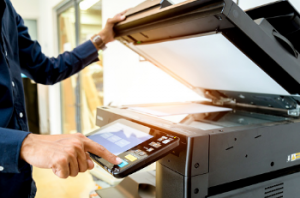Posted on June 2, 2022
How To Choose The Best Printer For Your Needs
Coloured printers are more expensive than standard printers. Laser and Dot matrix printers are cheaper but not as reliable as a Colored ones. Train and Chain printers are also available, but they are more expensive. You should know about their differences before you buy one. You can read this article to learn about these different types of printers. Then you can choose the best one for your needs. Here are some tips to help you choose the best one for your needs.
Coloured printers are more expensive than regular printers.
It is well known that the colour inkjet printers use more than one toner cartridge, so a colour print should cost more than a black and white print. In addition, it uses four toner cartridges, which depletes each one more quickly and needs to be replaced more often. However, replacing each toner cartridge is not as simple as counting the toner cartridges.
Coloured printers can run you about double or even triple the price of black ink, and the cost of the paper can be a fraction of the price. However, keep in mind that while colour ink is generally more expensive, the printer itself does not cost more than a black printer. Therefore, it is a good idea to make some comparisons before making your final decision. Below are some tips to determine if a colour printer is right for you. To learn more, you could check here.
Laser printers
 Laser printers are very similar to photocopiers. The original versions were based on photocopiers modified to use lasers for printing. A photocopier’s light source hits the photoreceptor drum coated with toner particles. The ink particles adhere to the drum because of static electricity. When they reach the paper, they are fused by hot rollers to the paper’s surface. A computer can read the resulting printed page.
Laser printers are very similar to photocopiers. The original versions were based on photocopiers modified to use lasers for printing. A photocopier’s light source hits the photoreceptor drum coated with toner particles. The ink particles adhere to the drum because of static electricity. When they reach the paper, they are fused by hot rollers to the paper’s surface. A computer can read the resulting printed page.
The first colour laser printer, sold for $3500 in 1984, was a problematic low-end model due to its limited resolution and low weight. Monochrome laser printers became more affordable, and they quickly replaced other printing technologies such as inkjets. But colour inkjet printers still had an advantage over monochrome lasers. Currently, you can find monochrome laser printers for less than $75. Monochrome laser printers are not as sophisticated and don’t feature any onboard processing. Instead, they rely on a host computer to generate a raster image.
Dot matrix printers
Dot matrix printers are an excellent option for businesses that need continuous paper feeds but do not have high print quality demands. These printers are easier to maintain and tolerate dirt than most other printers. They can be operated in warehouse settings without any issues, as they use a continuous stream of paper that has been fan-folded into a carton. As long as there is enough ink, a dot matrix printer will continue printing until the paper runs out. To learn more, you could check here.
Chain and train printers
There are two basic types of chain and train printers: a hammer-impact technique and a horizontal moving drum. Both are used to print documents, and the hammer-impact method is used in most impact medium and high-speed printers. While daisy wheel printers have many advantages, they are slow and noisy. They are also unsuited to printing graphics. The chain and train-drive printers have many moving parts, and a chain is usually mounted horizontally around a hammer set. Both methods are used to print, but the difference lies in the speed and efficiency of the machine.
Band printers
Band printers are mechanical printing devices that produce printed lines with a high line speed. The print band has to travel across the page consistently to generate each character. The band travel speed must match the hammer’s firing speed. It is not always possible, however. For this reason, high-end band printers can print 1200 lines per minute and even faster. The high print speed is due to the fast movement of the band and the heavy pulleys and motors.
The speed of band printers varies from high-speed to low-speed, but they all use the exact paper-carrying mechanism. These printers often have a hammer bank and cover and can write two lines on cheques three inches wide. Depending on the model, they can print up to 18,000 documents per hour.
